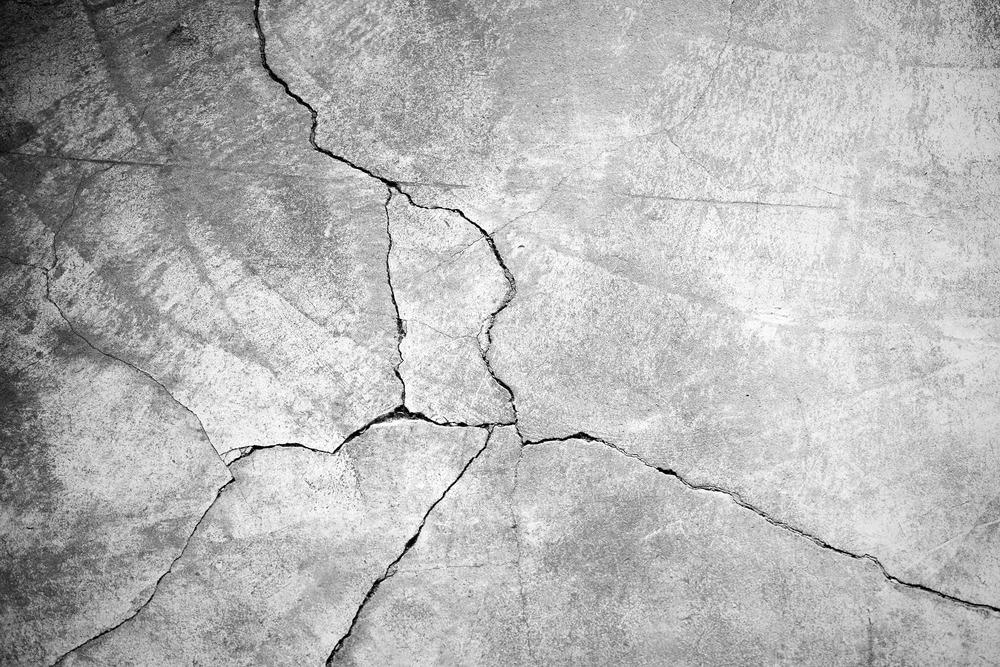An international team of materials scientists from universities in Italy and Spain recently developed new concrete materials with ultra-resistant properties and self-repairing or self-healing abilities. A large-scale experiment at sea is set to put the innovative materials to the test.

Image Credit: aslysun/Shutterstock.com
The concrete was developed jointly in the Universitat Politècnica de València (UPV) and the Politecnico di Milano in Spain and Italy, respectively. It has 30% more durability in cracking situations than conventional high-performance concrete available today. Its self healing properties enable it to automatically repair cracks, preventing them from growing and compromising the materials’ structural integrity.
The researchers cultured these properties by including novel components like crystalline additives, alumina nanofibers, and cellulose nanocrystals in the mixture and fine tuning its design. These agents all work together to improve the concrete’s self-healing ability
Concrete Already Repairs Its Own Cracks
Self-healing concrete, also known as self-repairing concrete, is concrete that can repair cracks autogenously (from within its own structure). Concrete’s self-healing abilities are in fact fairly well documented throughout history. The material sometimes naturally heals cracks as clinker minerals continue to hydrate. Ongoing carbonation of calcium hydroxide (Ca(OH)2) also leads to natural self-healing processes in concrete.
This natural self-healing phenomenon in concrete is difficult to control, however, as it only occurs on the application of water. It is also limited to healing only small cracks. Cracks large enough to pose a risk to the material’s structural integrity cannot be repaired by its natural self-healing processes.
Designing Self-Healing Concrete
It is possible, however, to engineer the design and ingredients of a concrete mixture to obtain and fine tune self-healing or self-repair capabilities.
Adding superabsorbent polymers to cementitious materials used to make concrete can exploit the natural self-healing properties of concrete by applying water in a precise and controlled manner. When micro-cracks form, the superabsorbent polymers near them spill water, rehydrating the clinker minerals and causing the crack to repair itself.
Doping the cementitious material with certain chemical agents (usually carried on capsules or vascular tubes) is another method of designing self-healing concrete. There is a focus of research on finding suitable chemical compounds that will perform the work of restructuring and rebonding the concrete around them, should cracks form.

Image Credit: studiojaskrawo/Shutterstock.com
Some self-healing concrete uses biological processes to achieve its self-repair abilities. Biological coatings have been developed for housing chemical agents. Furthermore, bacteria mixed in with the cementitious material (and in some kind of protective housing) has been shown to significantly improve the material’s self-healing properties.
Benefits of Self-Healing Concrete
Concrete that can repair itself has a longer shelf life and requires less maintenance. This can help to limit demand for concrete, one of the most environmentally destructive – and widely used – manufactured materials on the planet.
Part of the reason that self-healing concrete is so effective at improving concrete’s durability is that it prevents small cracks from getting bigger. This means that impacts on the mechanical strength of the material are kept to a minimum, of course, but it also means that it is less likely that steel reinforcement bars will become exposed.
Self-healing concrete is particularly well suited to high-impact applications such as roads and infrastructure, buildings in earthquake zones, and construction in the extreme conditions needed for renewable energy capture (windy oceans and mountains, for example, or deep geothermal excavations).
Putting Self-Healing Concrete to The Test
The self-healing concrete mixtures developed by UPV and Politecnico di Milano will be put to the test in six large-scale pilot experiments. Six large structures have been built with the materials, and they are all being carefully monitored.
Two of the self-healing concrete structures are in the Valencian Community in northeast Italy; one is a float for floating wind towers. Two more structures are installed in Italy, one in Ireland, and one in Malta.
An extensive network of sensors developed by UPV monitors each structure. The sensor system is self-contained and designed like an electric tongue. It provides real-time continuous data on the structures' durability. The don-destructive testing method can also pinpoint corrosion risks and find aggressive agents in the concrete materials.
This is a long-term, large-scale experiment that will provide important data on the effectiveness of self-healing concrete. This in turn will lead to more innovation in this field, and wider adoption of self-healing materials. Due to the climate crisis threatening the planet currently, drastic and immediate action to reduce our consumption of harmful materials like concrete is needed.
References and Further Reading
Han, B. et al. (2014). “Challenges of Self-sensing Concrete.” In Self-Sensing Concrete in Smart Structures. Butterworth-Heineman. Available at: https://doi.org/10.1016/C2013-0-14456-X.
“New ultra-resistant and self-repairing concrete materials.” (2021). Phys.org. Available at: https://phys.org/news/2021-09-ultra-resistant-self-repairing-concrete-materials.html.
Disclaimer: The views expressed here are those of the author expressed in their private capacity and do not necessarily represent the views of AZoM.com Limited T/A AZoNetwork the owner and operator of this website. This disclaimer forms part of the Terms and conditions of use of this website.